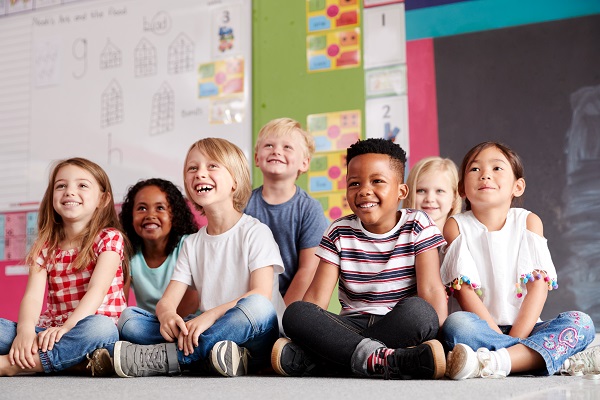Encouraging social and emotional learning in the classroom

The objective of SEL is to help students identify and understand their feelings, express and regulate their emotions, empathise and communicate with others, and build mental resilience. In other words, students benefitting from a SEL curriculum will develop their self-awareness, self-control, and social awareness and learn how to build strong relationships and make good decisions (NESET, 2017). These are crucial life skills that will help students transition into adulthood as autonomous and responsible citizens and navigate the labour market. Students who experience positive mental health and well-being perform better academically, benefit from healthy relationships with their peers, and engage meaningfully in school activities (LifeComp, 2020).
SEL is more pertinent than ever, with the COVID-19 pandemic having had a significant impact on the psychological well-being of students. In addition to developing students’ resilience, SEL can also help tackle issues such as early school leaving, bullying, and social exclusion. Children and young people spend a significant amount of time at school during a critical period of their social-emotional development. This is why schools must play a leading role in developing their students’ social and emotional competences (European Commission, 2022).
Keep reading to learn how to effectively implement SEL in your classroom.
Whole-school approach
The European Commission’s Pathways to School Success initiative ties into SEL as it emphasises the need for an inclusive whole-school, multidisciplinary approach to learning that focuses on student well-being and academic attainment. When implemented well, a whole-school approach can increase mental health literacy and promote prosocial behaviour. A successful whole-school SEL strategy should mobilise various resources in the entire school community and engage all key actors including learners, school leaders, teaching and non-teaching staff, parents and families, and local and wider communities (NESET, 2021). School leadership must demonstrate a commitment to implementing SEL and ensuring all other actors are actively engaged in developing student’s social and emotional competences. The Commission proposal outlines preventive and intervention strategies and compensation measures that schools can implement in this regard.
SEL in the classroom
An SEL curriculum should provide ample opportunities for group work and create a safe learning environment to facilitate student engagement.
Collaborative groupwork
Regular group work activities enable students to learn how to cooperate and negotiate, build leadership skills, and identify their strengths in a group setting. Collaborative learning can help to foster connectedness among students and increase their cultural awareness by interacting with others who are different from themselves.
To integrate SEL into specific subjects, students can play card games in maths lessons or incorporate SEL vocabulary into creative writing exercises and role-play activities. Role-playing is a great way for students to develop empathy and resolve conflicts by putting themselves in someone else’s shoes.
Responsible decision-making
Responsible decision-making is an important life skill that teaches students how to make constructive choices while considering potential ethical implications, safety concerns, social norms, and direct and indirect consequences. It encourages students to exercise self-control and develop their independence and self-confidence. Collaborative activities focusing on problem-solving and decision-making skills allow students to work together to identify and overcome different challenges.
Help your students make informed decisions by using the Quality Circle Method. Follow these steps, identify the problem, evaluate the situation, brainstorm possible solutions, analyse the options and consider the potential consequences of each option for all parties involved, make a choice.
Growth mindset
Fostering a growth mindset, a term coined by Dr Carol Dweck, in students is integral to SEL as it encourages students to view learning as an ongoing process. Reflection and goal-setting activities enable students to identify and critically think about their strengths and weaknesses in certain areas and track their progress. A useful tool in this regard would be a reflective journal writing exercise using prompts such as, what is one thing your team could do differently next time to solve this problem? Or, when was the last time you showed empathy to a classmate? (NEA, 2021). Teaching students to set goals, reflect on their successes, and acknowledge their setbacks allows them to celebrate their progress without focusing on the end result.
Other simple SEL activities:
- collaborative storytelling
- class meetings
- random acts of kindness
- encouraging positive self-talk
- debating
- mindfulness techniques (daily emotional check-ins, gratitude journal)
Additional information
-
Education type:School Education
-
Target audience:Head Teacher / PrincipalParent / GuardianSchool PsychologistStudent TeacherTeacherTeacher Educator
-
Target audience ISCED:Primary education (ISCED 1)Lower secondary education (ISCED 2)Upper secondary education (ISCED 3)
